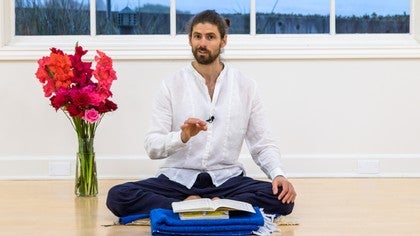Yoga Sutras of Patanjali: Sutra 1.32
James Boag
Watch this Talk
Hi Alba,
Thanks for your comment, glad to know you are appreciating the Sūtra content here. With the Sūtra-s there are always lots of valid, correct ways they can speak to us. Certainly, I think that we can recognise obstacles as opportunities, as invitations to look in ways that reach beyond our habitual ways of looking.
However, in terms of the Sanskṛt tatpratiṣedhārthamekatattvāhyāsaḥ
tat refers back to the antarāyāḥ - the previously described 'obstacles'. Pratiṣedha has the sense of preventing, driving away, removing. So 'for their removal, practice eka tattva: practice oneness, cultivate integration, samādhi. How to do this, Patañjali then begins to elaborate in the ensuing sūtra-s. The yogic method is to cultivate oneness, that is the ekatattva, referring back to 28, 29, when one recognises the underlying divinity and oneness of everything then obstacles dissolve and one understands one's self. Continued...
4 years ago
continuing...
If we are not in this state, then we have the recipe for practising ekatattva that comes in sūtra-s 33-39. I hope this is helpful. I could write much more in response to a question like this.
If you would be interested in attending live online courses please email me at james@jamesboagyoga.com to sign up for my newsletter which mentions all the courses I give. I will also speak to my colleagues at Yoga Anytime about making additional notes available for this course. Wishing you a happy Christmas, James
4 years ago
Tattva then is puruṣa, the enabling consciousness but neither Īśvara or the concerted effort to foster steadiness (1.13) can be explicitly found in the sāṅkhya model of reality, is puruṣa vast in its meaning? Are these two and whatever else is included in puruṣa That-ness? I am also curious, does watching ourselves watching, observe ourselves feeling, makes us the seer? Or are we forever the seen? And if we can be both is there another level of tattva not on the sāṅkhya model that accomodates that fusion?
4 years ago
You need to be a subscriber to post a comment.
Please Log In or Create an Account to start your free trial.







Calling out to your sanskrit understanding of PYS 1.32
Could it be that what Patanjali calls this "one single reality"
is refering to the reality of the obstacle ?
As to say, if you encounter an obstacle then let it be the support of your practice.
Alba